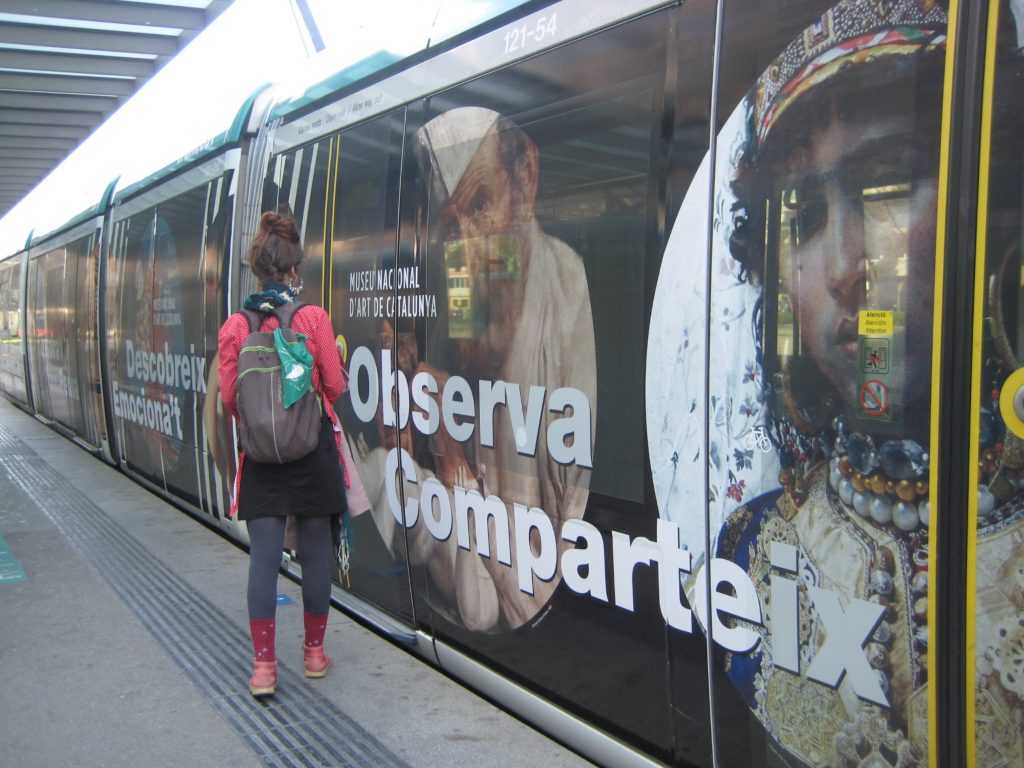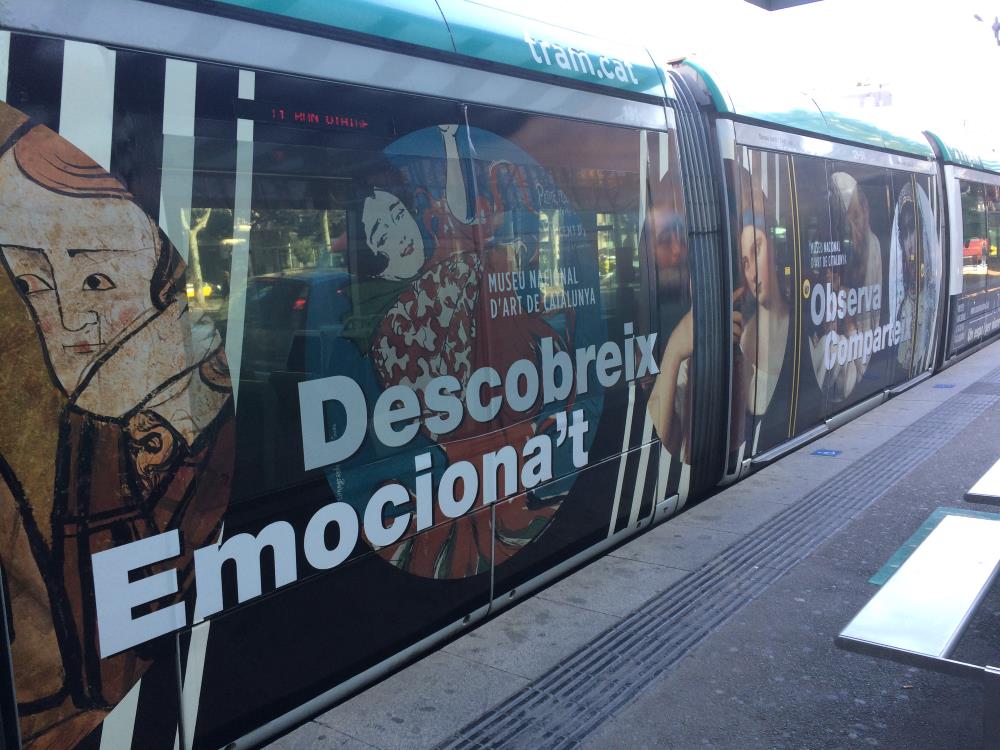Núria Perales and Patrícia Prats
The Museu Nacional is in constant movement and we have started the year with an action in the street which allows us to confirm this literally.
A total of 14 works of the collection have travelled by tram for two months and have surprised the travellers, more accustomed to seeing this type of advertising by the major commercial brands and not by public cultural institutions, and even less so, by museums.
So, for two months, we have had the privilege of getting in touch with all types of citizens over the 6 km journey of the Trambaix, from Barcelona and L’Hospitalet de Llobregat as far as Esplugues de Llobregat, Cornellà de Llobregat, Sant Joan Despí, Sant Just Desvern and Sant Feliu de Llobregat.
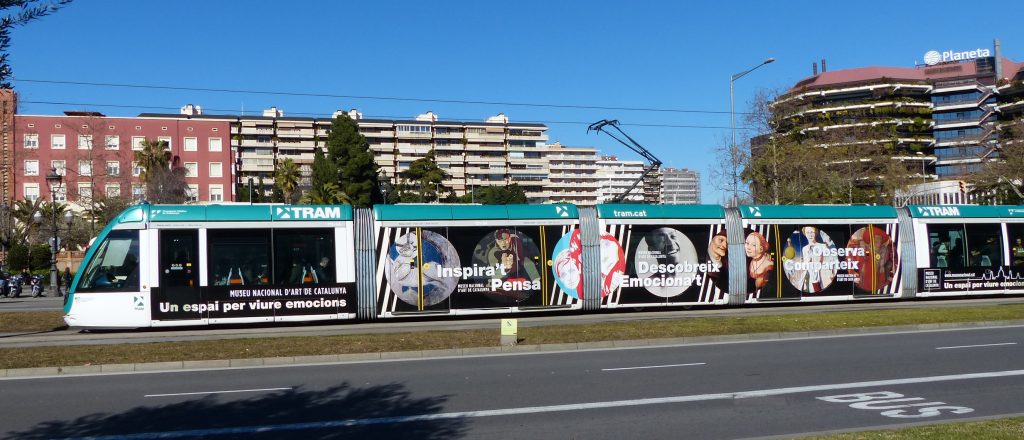
Thanks to a collaboration agreement between the TRAM and the group ArticketBCN, of which the Museum forms part, we have been able to take advantage of free-of-charge large-sized advertising during the months of February and March, which has allowed us to have a major visibility among thousands of citizens and a not very habitual presence in the territory.
Due to budgetary questions, too often we are obliged to restrict our campaigns to the city of Barcelona. It is therefore very good news to have been able to deploy this corporate campaign in the main towns of the Baix Llobregat through a means of mass transportation, as is the case of the Trambaix, which in 2018 did more than 19 million journeys.
Art which moves and connects people emotionally
Faced with these figures of potential audience, it was clear to us that we should try to get the most out of the opportunity that this publicity action provided us with so as to explain that the Museu Nacional is a place to live multiple experiences through art: a space to live emotions and to share them.
It is necessary to place the focus on the fact that we have a major collection of works from nearly all the periods – from Medieval times up until the 20th century – and of very different disciplines such as painting, sculpture, posters, photography or, more recently, comics. A permanent collection which, curiously isn’t permanent at all.
We therefore proposed the briefing to the TSC agency: we wanted to get away from the pigeon-holing of the Museu Nacional as a museum of just Romanesque and Modernism. These are, without any doubt whatsoever, our most important collections at an international level, but the Museum is much more than this and this is clearly demonstrated each year by the exhibitions programme.
Get inspired/ Think / Discover/ Become moved/ Observe / Share
We wanted to do a corporate campaign that was daring and appealed to the emotions.
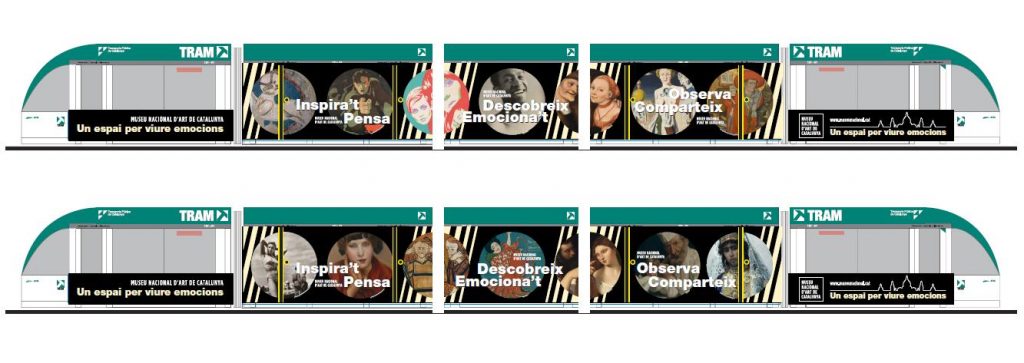
With this communication goal, we chose details of works of the Museum reproduced in large format, so as to achieve a strong visual impact. Paintings, photographs, posters…from the 11th century until the nineteen fifties of the 20th century. The 14 works chosen, printed on vinyl of more than 2 metres high, appealed directly to the travellers.
And it is very clear to us that for some time museums are no longer places for contemplation, becoming spaces where all publics can find their own place. Where we can inspire ourselves by looking at a landscape or we can think about the current society so different from the one of 1,000 years ago when the walls of the churches of the Pyrenees were painted.
The reproduced works of almost two metres high which make the travellers think:
The resulting graphic proposed, places the emphasis on the variety of the collection and also on the new items: the new presentation of the Renaissance and Baroque collection or the incorporation of the comic into the expositive discourse.
We took advantage to announce the future monographic exhibitions dedicated to Antoni Fabrés and to the photographer Oriol Maspons, which will be the most important retrospective ever done, and will be inaugurated in July. Art produced during the Civil War or Post-war art and the second avant-garde, shared the wagon with Medieval and Modernist works.
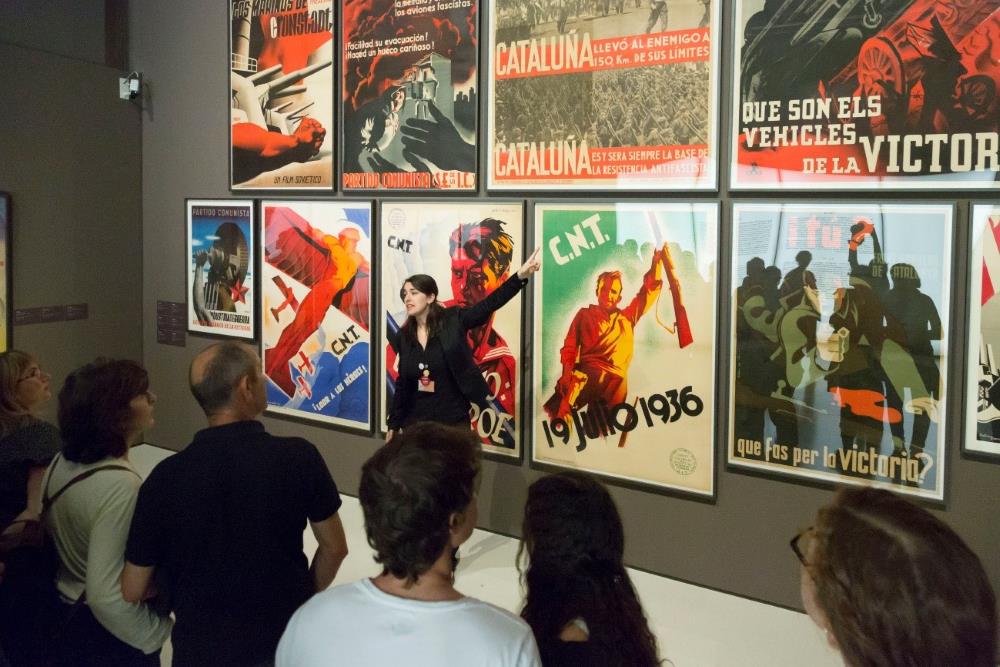
The characters that look at us from the sides of the tram remind us that every work, every artist, every movement, leads us to reflect on ourselves and our time.
In short, we have wanted to communicate the fact that we are many museums in one, as many museums as the physical or virtual visitors we have.
Related links
Deconstruction of the Modern Art campaign


